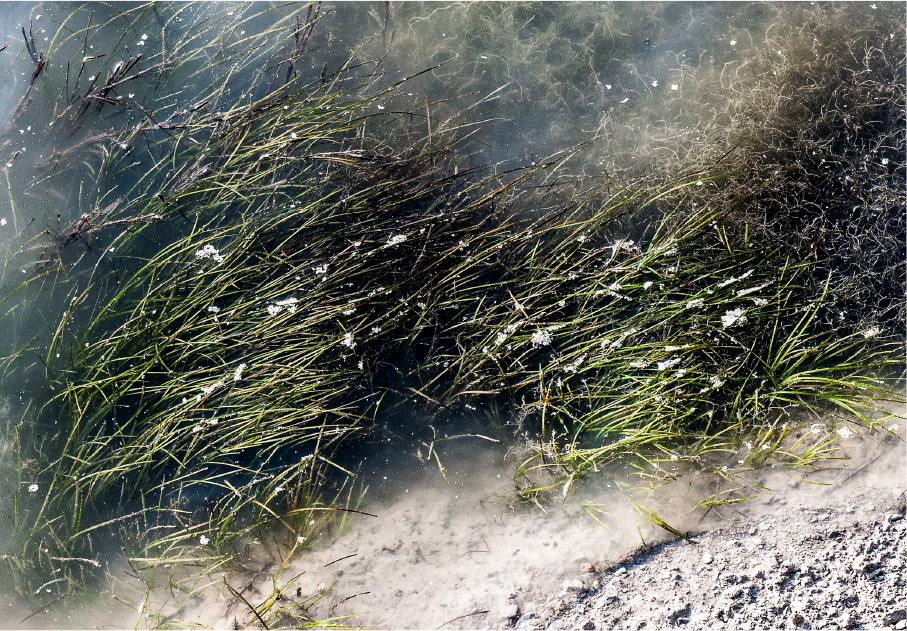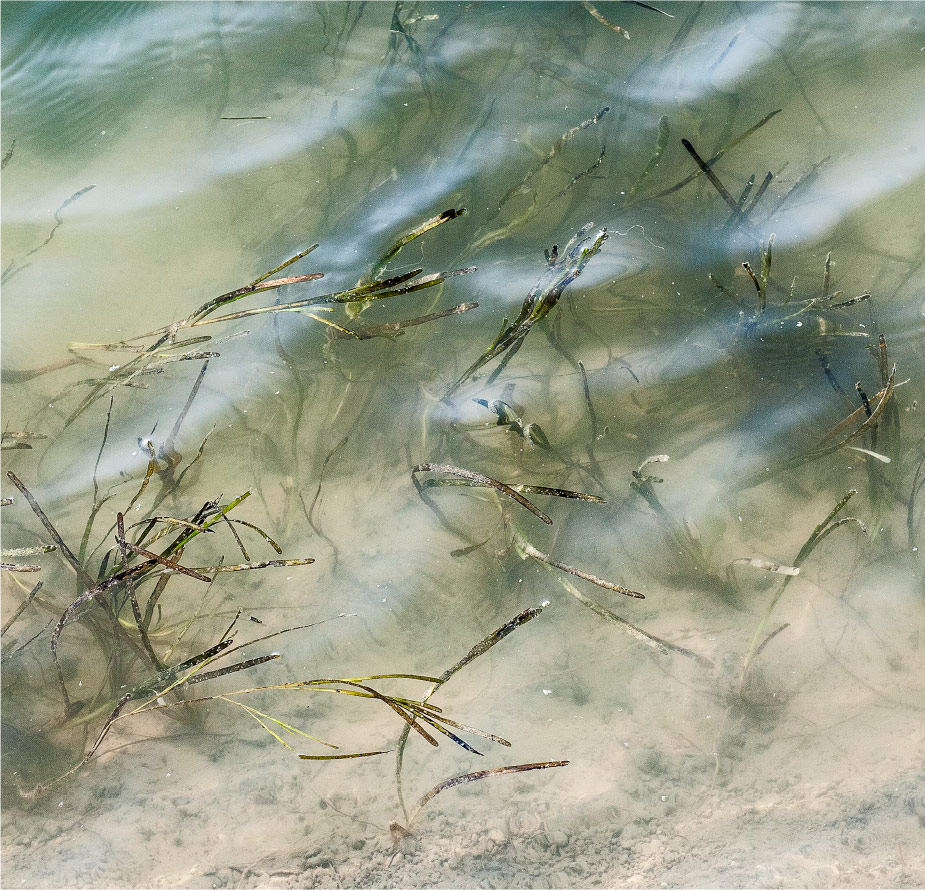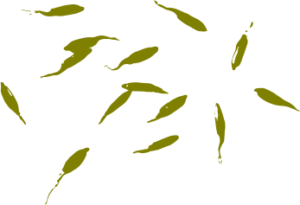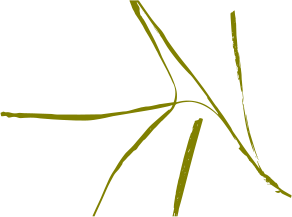
Sustainable crops.
The studies we have carried out confirm that Zostera marina, and marine grains in general, are the most sustainable crops currently known. Why? There are several reasons for making this statement, but there are two fundamental issues that must be highlighted:
• Crops do not require fertilizers or chemicals.
• Crops do not need additional nutrients, just the circulation of seawater.
Leads to enrichment of ecology, landscape and social systems.
At Aponiente, we have managed to bring the biological cycle of Zostera marina full circle. In addition, we have proven that the cultivation of marine grain generates diverse habitats when it comes to ecology, landscape, social systems and the environment.


In our detailed study of marine grain, we cultivated nearly 3000 m2 in the Bay of Cádiz. In the process, we recovered areas that had been abandoned for decades, thus contributing to the social and environmental revitalization of the area.
We are working to restore the ancient salt marshes and fish farms, in an experimental effort to favor the marine grain crops that have made it possible to maintain a primary traditional industry and recover whole ecosystems. The result is both species and high-value-added products (sea rice + fish + crustaceans), generating a level of marine biodiversity that had previously disappeared.
In addition, these crops contribute to carbon drawdowns, and as such, to the mitigation of harmful substances that are causing climate change.
Social surroundings.
Cádiz is located in one of the areas in Spain, and indeed in Europe, that is most affected by unemployment and the fragile economic situation. It is the only Spanish province that is eligible for ITI funds through the European Union. The tool was designed by the EU to support a set of integrated actions in a specific geographic area that is particularly depressed.
The province with the highest unemployment rate in Europe, currently in an economic and social situation that truly sounds the alarm, Cádiz is an extreme case. It is also the Spanish province with the greatest number of high-population municipalities in all of Spain. More than one million inhabitants, about half of whom live near the Bay, have always worked in tourism and construction. They have watched as almost the entire industrial sector has collapsed.


The value of the salt marshes and swamps of Cádiz was once impossible to measure. Today, most have sunk into abandon, while others have been lucky enough to be protected within proposed natural parks or are otherwise protected by UNESCO.
These spots are ideal for the development of ecosystems made up of communities of plants and animals, whether aquatic, land-based, coastal or marine. They are spaces where our marine grain can grow and evolve sustainably both naturally and economically.
Key weapon against climate change.
The benefits for the environment are countless, given that coastal wetlands and marine grain meadows comprise ecosystems that are fundamental for the planet’s equilibrium.
Phanerogam meadows are the most efficient carbon sinks on Earth. They provide protection from extreme climactic phenomena, including storming and flooding, which are on the rise thanks to global warming.
This is one of the key reasons for the development of the present project: its contribution to caring for the environment.
- Captures blue carbon, generates oxygen and regulates the carbon cycle.
- Mitigates tidal effects and rising sea levels.
- Prevents underwater erosion and provides habitat for valuable underwater wildlife.
Extremely productive crop with few technical requirements.

The studies we have carried out have determined that crop yields are similar to other kinds of grains, like common rice for example, in addition to being very productive and with scarce technical requirements:
- The results point to high productivity, with almost five heads per plant.
- Potential for up to 20 seed pods per generative shaft.
- Average density is about 675 generative shafts per square meter, with maximum levels of up to 1000 shafts/m2.
- Yield estimates in wild settings are of 5-7 tons per hectare, which is similar to the production of other kinds of grain.
Preliminary calculations show that potential average harvests could be around 3.5 Tm./Ha, with conservative estimates of around 6 Tm./Ha, and a potential maximum of about 14 Tm./Ha.
- Thanks to chloral growth, the same plant recurs, resulting in numerous plants throughout the year. As such, the system makes use of exponential root reproduction (each year, five plants result from just one planting).
- Scarce technical requirements, keeping maintenance costs low:
- The plant is a perennial, making it unnecessary to plant crops each year. No pesticides are required, given that it remains free of blight and suffers from no known diseases. Neither is fertilizer needed as long as seawater is constantly circulating (not irrigation). The plant can also be used for other purposes, including drying leftover leaves for straw.
- Seed heads appear annually, and they drift away after dropping the seeds, leaving the harvest unaffected. The plants continue to grow and the harvest takes place the following year.








